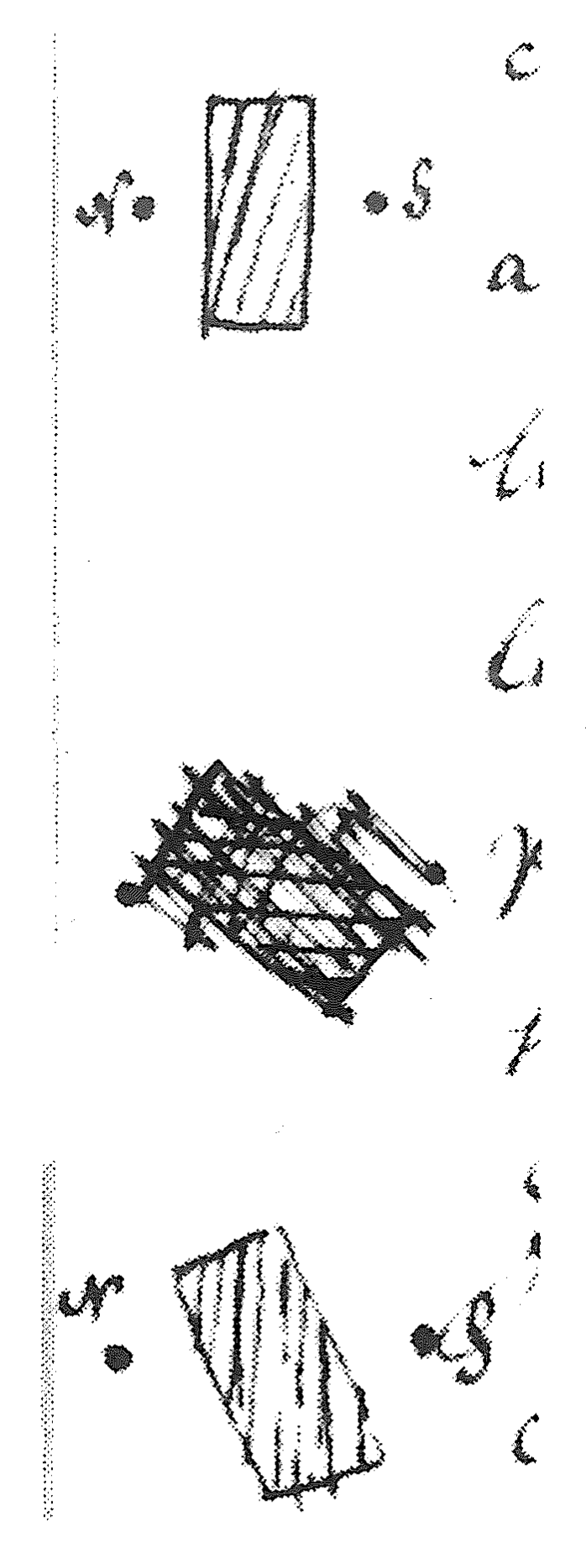Julius Plücker to Faraday 7 February 1849
Dear Sir!
I thank you very much for your kind letter of the 14th of Dec.1 by which you give me a short notice of your newest discoveries. You may think that I was a[n]xious to repeat them instantly, but being a poor german professor, obliged to give 3 lectures a day & charged too with different functions at the University, I found time to work only a few days ago. As my results are in some respect different from yours, I take [the] liberty to co<bar>municate the following ones.
1. I first tried antimony and was extremely surprised to find that its magnecrystallic axis (perpendicular to the chief cleavage planes) points not axially but equatorially. It has been confirmed by all different modes of suspension. I could not attribute the different effects to the state of impurity of my specimen of Antimony, nevertheless I tried pure antimony taken from the laboratory of Professor Bischof2: but allways the same result.
2. Secondly I tried very fine and pure bismuth, and was satisfied to find its magnecrystallic power very strong, the magnecrystallic axis pointing axially quite so as you describe it. Then I experimented with the less perfect cleavage planes and I found that there is another corresponding magnecrystallic axis, that axis belonging to the chief cleavage planes being more affected by the magnet than the other ones. The following experiment may prove it.

A plate of bismuth bounded by chief cleavage planes, showed in these planes several parallel lines, indicating a second less perfect cleavage. If suspended horizontally in the level of the poles (the principal magnecrystallic axis being vertically and the two poles as near as possible) it pointed like a co<bar>mon diamagnetic body, but lifted up one centimeter or nearly so, it turned instantly taking such a position, that the parallel lines mentioned above pointed equatorially and continued to do so even at a height of 10-15 centimeter[s] above the level of the poles. It proves that there is another magnecrystallic axis contained in a plane perpendicular to these lines and perpendicular itself to the less perfect cleavage planes.
If you think my observations wrong, I’ll send you in a letter some of the pieces of antimony and bismuth used in my experiments.
My head turns round by the multitude of new facts. I am about to get new ones.
I hope you will realize Your imagination to see Germany, and then I hope too your first stay will be at Bonn. In this case I shall be happy to give you any information you like, and if you should desire to work then I’ll be your assistant (My Electromagnet will become more powerfull than it is now, I think it proper to put on it 100 pounds more of copper wire). You have many things better in England than we have in Germany, but our climate, namely in the spring, is better than yours, and I am certain, that even a short stay in our country wou<<ld>> do good to your health. No doubt our political s<<tate>> is a disturbed one3, but travelling or residing in our country you will scarcely perceive it; none of the English families, living here, left Bonn for that reason.
I did not yet see any of my papers in the English dress4, though Mr Frances [sic] promised me some copies of them. I join to this letter a copy of my last papers5 and will be very glad to see yours about the magnecrystallic axes6.
I am Sir | very truly yours | Plücker
Bonn | 7 Febr. 1849
PS. Excuse Sir my bad English.
Address: A | Monsieur Faraday | &c &c &c | Royal Institution | London
Please cite as “Faraday2152,” in Ɛpsilon: The Michael Faraday Collection accessed on 29 April 2024, https://epsilon.ac.uk/view/faraday/letters/Faraday2152